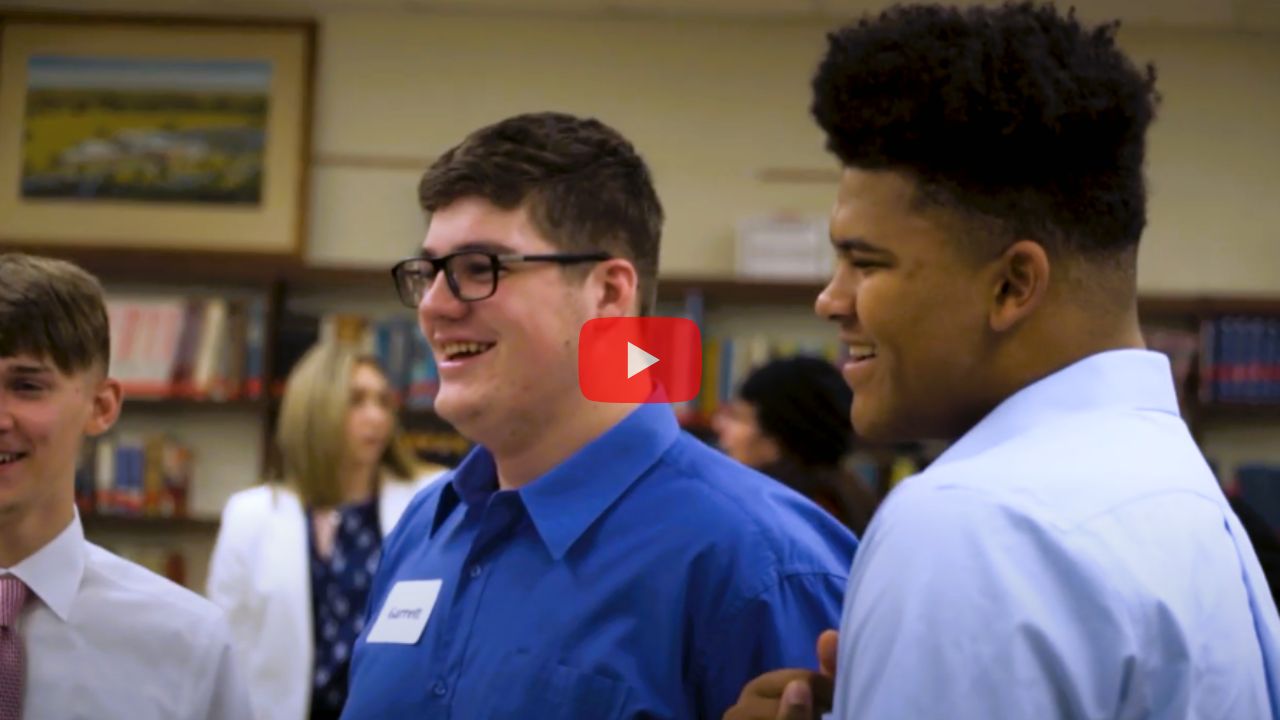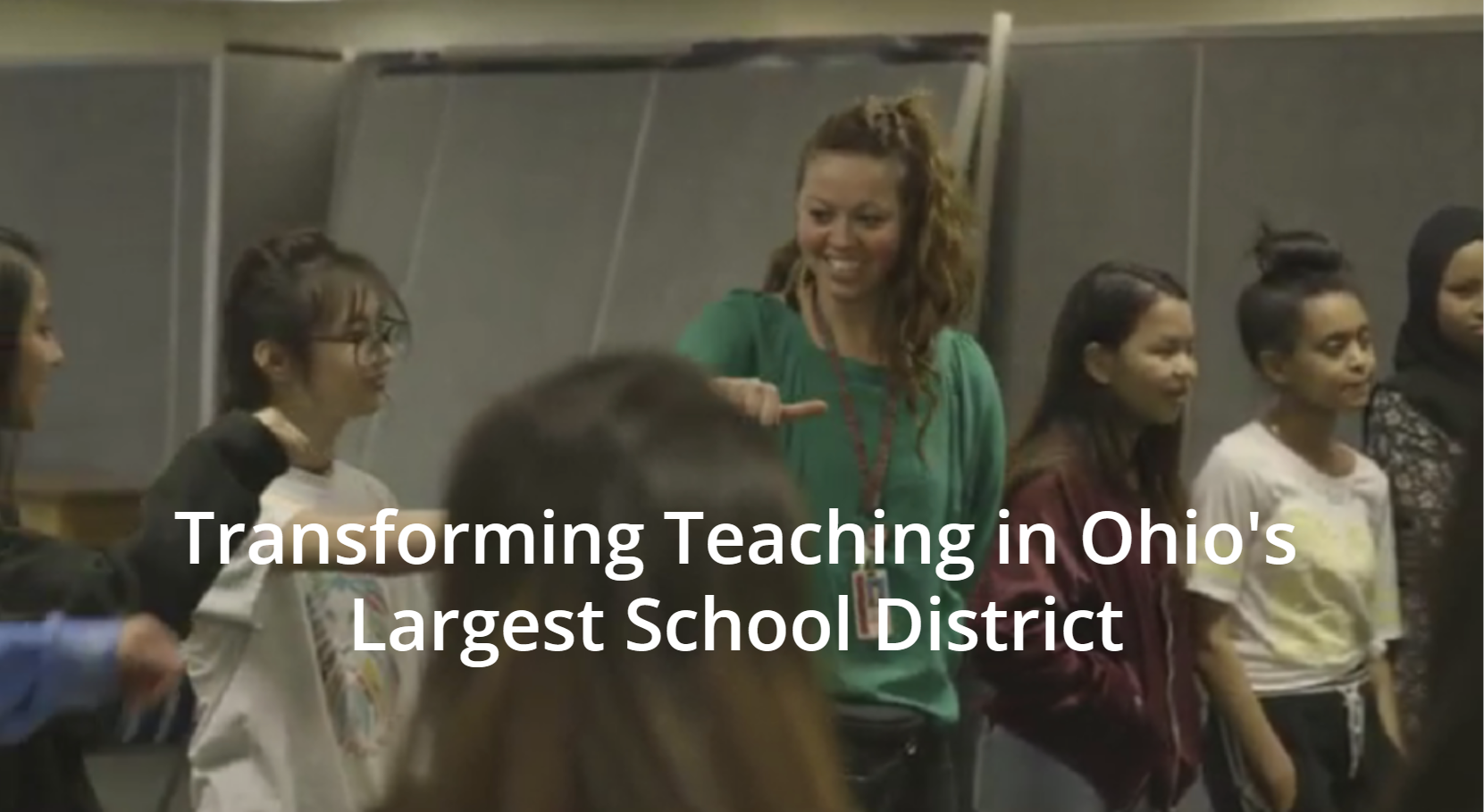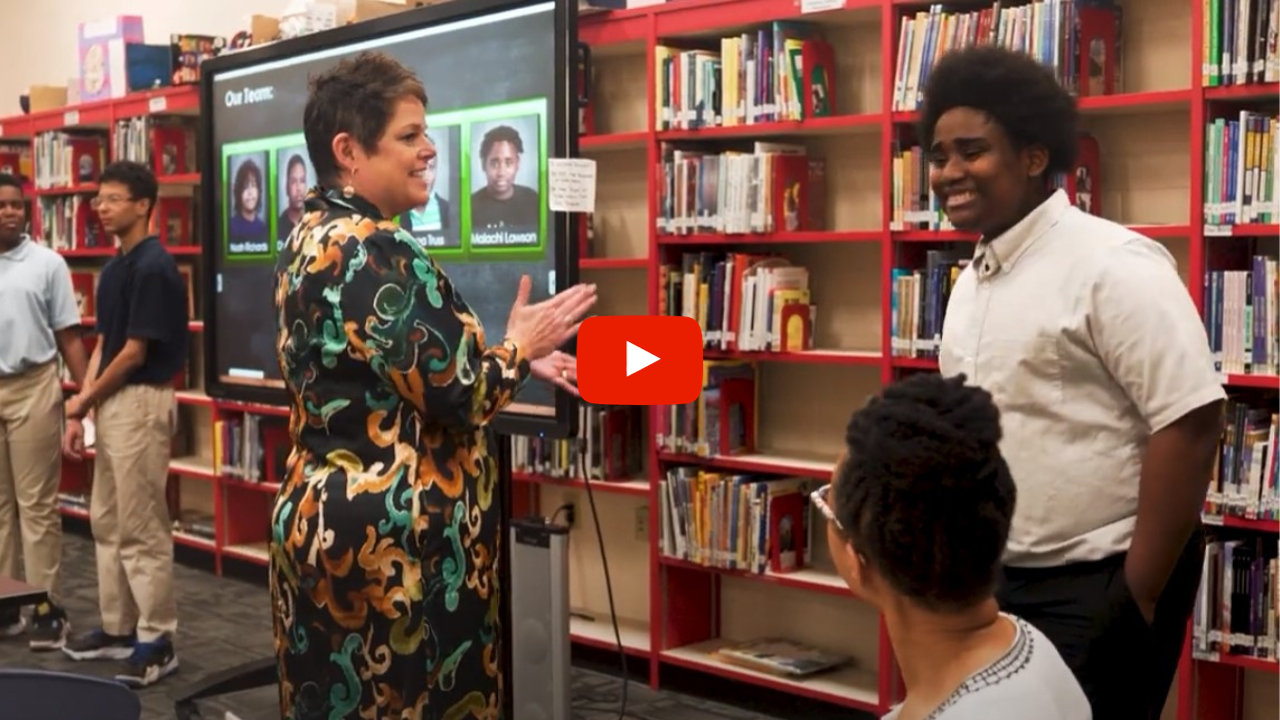In this episode, Doris explains how she uses real, local startups in Hawken’s Entrepreneurial Studies program. She details one semester’s line up of businesses, the challenges posed and expectations for the student-designed solutions.
Alison: Doris, can you give me an example of the business challenges that you used in past semester for business 1, two and three to give a sense of what that looks like?
Doris: Sure. So for business 1, I’ll just pick one semester. Business 1 was Rustbelt Reclamation. Rustbelt Reclamation is a local company here in Cleveland. They make custom furniture out of reclaimed wood. It’s Cleveland. There are a lot of neighborhoods where they’re redeveloping the entire neighborhood, plowing stuff down. Instead of going into the landfill, Rustbelt Reclamation takes the wood and makes beautiful furniture out of it.
Rustbelt Reclamation, the CEO, his name is Deej. They have two designers. At one point the designers came to Deej and said, “Look, we made these little accessory products.” Their business, they sell custom tables and bars and reception desks for hotels, big jobs, expensive, beautiful furniture. These designers came and said, “Look, we made this cool bottle opener and drink caddy and a little flag that somebody could put in their dorm room. Aren’t these things cool?”
Alison: Also out of the reclaimed wood?
Doris: Also out of the reclaimed wood. Deej said, “Those are cool. Let’s make a bunch and see what happens.” They did a flash sale and they sold out of everything within 36 hours. Deej thought, “Wow, that would be a great business for us. We’d be able to use a lot more wood. Let’s give it a shot. Let’s sell accessory products to consumer, all of these in the $100 and less range.”
So they tried. He quickly discovered that is a whole different business. That’s an entirely different business to sell to consumers and to do consumer product marketing. He stopped because he realized they were great at custom furniture and they’re not good at consumer product marketing. So the challenge for our students was how can Rustbelt Reclamation go to market selling accessory products to consumers? That was the challenge.
Here’s why that was a really wonderful first business. First of all, it’s easy for students to connect with what the business is all about. They want to do well and they want to do good. They’re saving the planet and they’re also building a profitable business. We don’t, by the way, we don’t always use businesses that have a very explicit, strong social mission, but I have to say that most of them do—almost all. I’m happy to say it’s not that hard to find them.
Alison: Right.
Doris: So the students immediately connect with what the business is trying to do and what it’s doing. It has both profit and social purpose. And the problem is a very simple marketing problem. So you can be creative with it, but there’s nothing that complicated about it. We’re selling drink caddies and bottle openers and flags for $100 or less online. How should we go about doing that?
So that was business 1. I’ll tell you what business 2 is and business 3 is. So let me say this. There are a couple of things that are important in the first problem the students work on. One is that you want to find something that they’re going to connect with easily, that isn’t too esoteric and something they’ll probably be immediately excited about and connected to.
Also, we want to find one that is, again, fairly simply because they’re going to have to learn a lot of foundational methods and techniques and approaches and skills and they’re going to be learning while they’re doing. So they can’t have a really complicated problem because they’ll never have any sort of solution in the three weeks they have.
Alison: Right. In that one I imagine they were out doing a lot of customer development and talking to the community.
Doris: It’s mostly market research. Most of what they’re doing is they’re learning how to do market research. In the meantime, we’re teaching them customer development. We’re teaching them about market research. We’re teaching them about . . .
Alison: Product market fit.
Doris: Product market fit, segmentation, a little bit about statistics, not much. We’re teaching them to present well, communications. We’re giving them sort of the basic design thinking toolkit so they learn how to interview well, how to interview for empathy, how to build an archetype, all that stuff.
Alison: Perfect. In three weeks?
Doris: In three weeks, right. And again, we’ve taught this in different forms and we’ve worked with others who have basically done this class but only didn’t have the kind of time per day we have now with these students. It could be five weeks. In our case, we happen to have with this semester course. We have the students for more time during the day. It’s three weeks, but basically they have very little time.
They’re also learning the basics of collaborating and doing project work as a team. There’s really fundamental stuff. Even project management . . . how do you manage a project when you have four people working on it?
Along the way also they have to become really knowledgeable about some things. There are things they have to become knowledgeable in when it comes to reclaimed wood and when it comes to retail markets. They have to do some very specific homework.
Alison: Sure.
Doris: It’s not all just creative subjective stuff.
So then the second business was a business called Everykey, also a local Cleveland company. Everykey sells wristbands that have unlocking technology. So they have developed software and hardware that unlocks anything physical or virtual.
Alison: Wow.
Doris: Yeah, it’s cool. You wear this band and whatever programs you have online with various user ideas and passwords, etc., you just wave your band or it opens your garage or your front door, etc. It’s really, really cool, sophisticated software they’ve developed, very cool.
Alison: And that was a local company as well?
Doris: It’s a local company. It’s a local startup. These are all just awesome businesses. So the CEO of Everykey is a guy named Chris Wentz—great guy. So Rustbelt, the students come in day one, we take them to Rustbelt. They don’t know anything about the business until we take them in because I don’t want them to be coming in biased, either by their own research they’ve tried to do or parents telling them, “Oh, I know . . .”
Alison: Sure.
Doris: So they come in knowing nothing. It’s very important. What they learn about the business they learn entirely from the start from the CEO. So they see the business. The CEO gives them their challenge. We’ve worked with the CEO ahead of time, as you know, so that the CEO, we’ve crafted things in such a way that the students are going to be given a challenge that they can actually . . .
Alison: Work through.
Doris: Work through in the time they have. So that was Rustbelt. The day after they give their final presentations to Deej and his team at Rustbelt, we take them . . . actually, in the case of Everykey, who at the time, didn’t have their own big office, Chris came to us the day after and presented Everykey and their challenge to the students.
Alison: Which was what?
Doris: Their challenge was because of where Everykey was at that moment, I have to give a little context, the challenge was should Everykey adopt a licensing only strategy or a product strategy or something in between?
Alison: So if they were to license to like a Fitbit or another wearable company . . .
Doris: Sony, Apple.
Alison: Sure. Okay, license the software or keep going with their own band.
Doris: Right. So actually a very interesting and very sophisticated problem. Everykey doesn’t really have an explicit social mission, but it’s a very interesting, very good company and business and the learning that the students I knew wouldn’t be doing that in fact they did was phenomenal. They had to learn about technology and the technology related industry was a lot of strategic stuff that they had to learn about.
Just to give you an example—this is real—as Chris is presenting the business on the first day to the students, I’m standing at my computer and all I’m doing the entire time is typing any word he says that I’m betting the students don’t know. Basic words that he thinks are really basic that I’m betting the students have no idea.
Alison: Sure.
Doris: So I’m typing the words. Things like distributor, OEM, application interface, whatever it was. I’m going on. By the time he leaves for the day, I have this crazy-long list. The students, he presents the challenge. There’s a Q&A session. They ask their questions. When he leaves, I ask the students what some of these words are. They have no idea of any of them. So they listen to them. They had an opportunity for Q&A and they still didn’t.
So they’re learning. By the time they got to the end when they’re presenting their solutions, oh my gosh, what they had to learn in order to give any sort of credible response. Everything they provided as a solution has to be evidenced based. It has to be validated. So as a 16-year-old, your opinion is not that interesting, really.
That’s where the rigor comes in. If you want to do a really good job of providing a solution, you have to do a really good job. We’re going to ask you a lot of questions. It isn’t about pleasing the teacher and giving the teacher what they want to hear. Anyway, that was business 2.
Business three. There’s an organization in Cleveland that is an accelerator called ECDI. ECDI found that in their first 18 months, they, without trying, had a huge number of food-based startups not only renting out their commercial kitchen but also asking them for help in setting up their businesses and their processes and how to go about getting into the business.
Alison: Sure.
Doris: ECDI had been given a grant. They had just been given a grant for $500,000 to create a food distribution business. This separate organization they setup called Cleveland Culinary Launch Kitchen was brand new. They now had $500,000 and the question was, “How should we use this to setup a distribution business for food-based startups?”
Alison: Got it.
Doris: Okay. So if you think about those three . . .
Alison: That’s pretty open-ended.
Doris: Yeah. It’s open-ended and it requires you to learn a lot of things, right? It’s open-ended but you have $500,000. You have 40 food-based startups. You have a kitchen with a specific capacity. You already have some things in place.
How would you use that $500,000 worth of resources and the limitations that you have to best get into a distribution business and why is that the best way? What do you predict will happen? What are the results of what you come up with? So it’s very creative, but at the same time, there’s a lot of real stuff you have to contend with.
Alison: And a lot of real people’s livelihoods on the line. You’re talking 40 food startups, entrepreneurs that likely don’t have a lot of experience running their own businesses or distributing at scale with high quality and quantity.
Doris: Right. So you’re a student that semester. With each of those three, you’ve been working on a completely different team dealing with the dynamics and challenges. You have a deadline for each one. So you start day one knowing absolutely nothing and you’re a high school student. You have no frame of reference. You have no experience. You haven’t been reading Forbes or Crain’s or the Wall Street Journal or anything else, even the business section of the Cleveland Plain Dealer. All of it is new to you.
You saw this past semester when they worked on Beam Dental. The very beginning terms that you have to use when discussing dental insurance—no idea. They don’t even have to worry about insurance plans because their parents take care of it.
Alison: Exactly.
Doris: Every one of these businesses are like that. They go in day one. They know absolutely nothing. They have three weeks or whatever it is with a deadline. The deadline is when the real CEO and his or her team are going to come back and say, “Okay, what do you have for us? What should we do?” What you present you have to have be able to back up. There’s no question about whether it’s meaningful or relevant because there’s a real business in every case and this is their real problem and they’re going to care a lot about what you have to say.
So if a student comes to me and says, “I think this for Rustbelt, but I tried to do some interviews to validate it or I tried to do some homework and I wasn’t able to find anything. But does this make sense to you, this idea?” My answer is, “I don’t know, but if you present this to Deej as part of your solution and then he goes ahead and does it and you haven’t been able to do anything to back it up . . .” and their eyes go big and I don’t even have to go on. They get it. It’s not something they feel good about presenting.
Alison: Absolutely. I think that’s some real truth to this model of using real problems that you can’t make up something that would have this much power or the sense of urgency that the students feel to really solving this for someone who feels this pain, who’s awake at night trying to solve this. The fact that 16-year-olds are able to come into the room and present some evidence-based solutions where . . . I don’t know if you quickly to what the entrepreneurs walk away with and some of their feedback.
Doris: Yeah. I have a line I use. You’ve heard me use it when I’m talking to CEOs before. I say, “It is my sincere hope that you will get something useful out of this. But I have to tell you that the priority is the learning and it’s possible that you won’t.”
What I’m happy to report is every CEO, especially the more we’ve developed this, the more and more CEOs have said, they’re very surprised by two things. Number one, they’re surprised at how little time it actually required on their part. We’ve worked very hard to make that the case. And number two, the quality of what they got out of it from the students.







